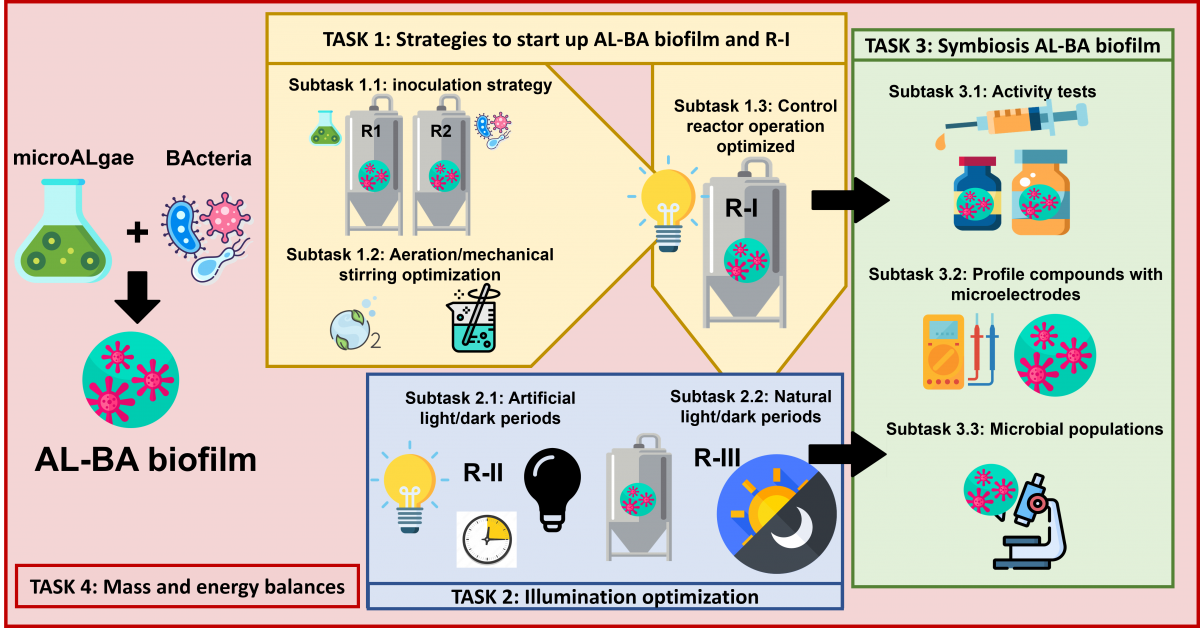Current wastewater treatment technologies, like the conventional activated sludge (CAS) process, are very energy intensive and produce greenhouse gases (GHGs) like CO2, N2O, etc. For this reason, it is necessary to develop more efficient processes like those based on bacterial populations grown as biofilms, which have advantages over CAS systems such as better sludge settling properties, that facilitate the biomass separation, and the ability to remove organic matter and nutrients in the same unit. However, the main drawbacks that can be highlighted are the high energy consumption during aeration, which leads to unavoidable GHG emissions. On the other hand, the use of microalgae has gained relevance, as their capacity to sequester CO2 is 10 to 50 times higher than that of terrestrial plants. Moreover, depending on the various intracellular biochemical components of microalgae, the biomass obtained can be valorised to produce biofuels, pigments, cosmetics, and antioxidants. However, microalgae are grown in suspended culture, which implies an energy-intensive biomass harvesting process to separate them from the treated water. Therefore, the combination of microalgae and bacteria forming aggregates (biofilm) can combine the strengths of both processes and reduce their weaknesses. In this symbiosis, the O2 required by the bacteria can be supplied by the photosynthesis of the microalgae, and the CO2 generated from bacterial respiration can be used for microalgal metabolism. At the same time, they grow together forming aggregates that facilitate the separation between the biomass (consortia microalgae-bacteria) and the recovered clean water. This biomass can then be used to obtain other valuable products.
Objective
The main objective of the ALBA project is to study the performance of a bioreactor containing microalgae-bacteria consortia applied to treat/valorize wastewater and to define the operational conditions that allow to minimize the energy consumption for aeration and the light supply. The proposed methodology and tasks are focus on understanding the processes that take place inside the aggregates and pinpointing how the structure affects the microalgae-bacteria interactions. For this reason, the project is based on the operation of different laboratory bioreactors in which the energy-intense external aeration is gradually replaced by mechanical stirring, and artificial light is switched by natural one. Special attention will pay to the carbon to nitrogen ratio (C/N) to understand the posterior application on different wastewater types (municipal, industrial, etc.). Additionally, monitoring the microbial activities (using batch tests and microelectrodes) will help to establish the corresponding mass and energy balances to shed light on the overall overview of the microalgae-bacteria symbiosis.


Ayuda para incentivar la Consolidación Investigadora CNS2022-135142 financiada por MICIU/AEI /10.13039/ 501100011033 y por la Unión Europea NextGenerationEU/PRTR




